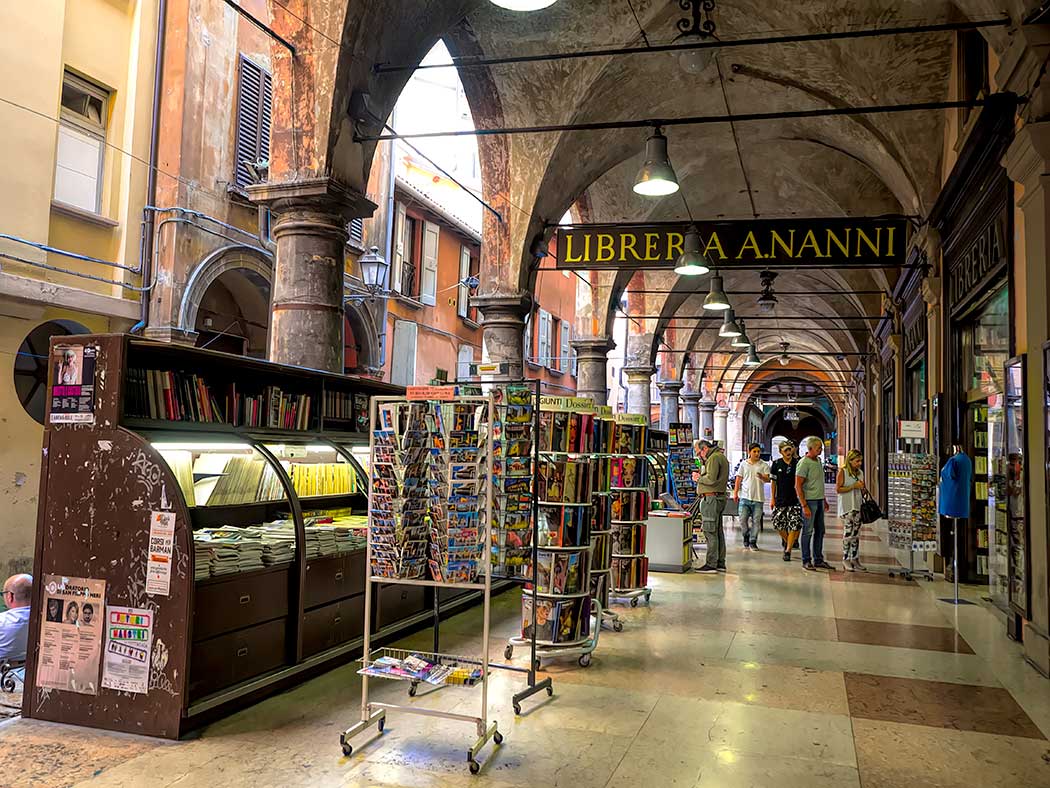
The porticoes of Bologna, Italy, were built between the 11th and the 20th centuries. Like most Medieval cities, Bologna’s porticoes were built to shelter residents during inclement weather. The arched arcades were attached to the buildings on one side and supported by a row of massive columns on the street side. While porticoes gradually disappeared from most Medieval cities, they endured in Bologna because the city passed a law in 1288 that made their construction compulsory for all new building projects. Interestingly, the law is still in effect.
Today the city of Bologna boasts more than 23 miles of porticoes in a variety of designs and colors. I found them to be the most delightful architectural feature of the city and never tired of comparing the differences from street to street. The above photo shows the portico on Via de’ Musei Street, where Libreria Nanni open-air bookstore takes full advantage of the covered space to display merchandise in front of the shop. This kind of “open-air” use is found all over the city. Neighborhood grocery stores stack fresh fruit on wooden stands under the porticoes and cafes extend their seating by placing tables under the arches. The porticoes of Bologna are considered so important that they are even on the tentative list for consideration as a UNESCO World Heritage Site.

There are so many places in Italy that have character like this … love it!
Thanks so much Gary – I seem to end up in Italy every year for at least a little while.